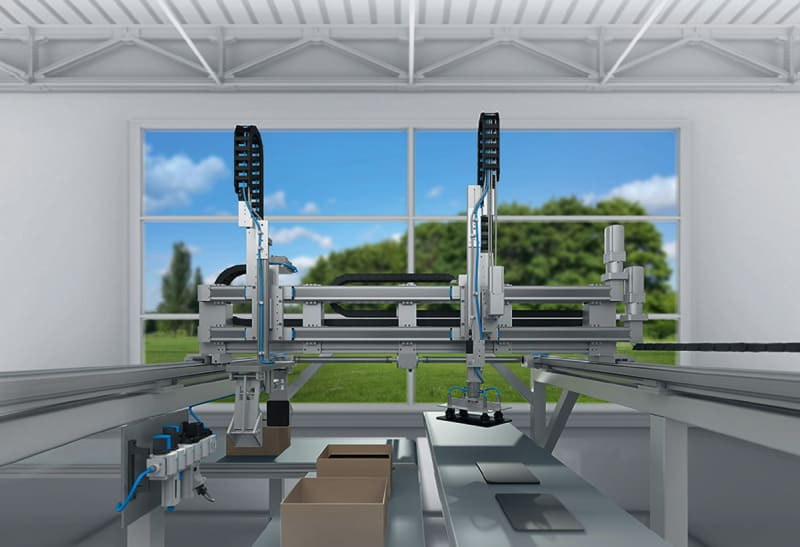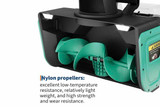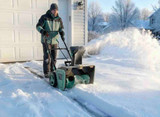Experts advocate smart designs for Pneumatics for Sustainability, Energy saving and Optimal performance of Machines
Experts advocate smart designs for Pneumatics for Sustainability, Energy saving and Optimal performance of Machines
Improved pneumatic system offers significant opportunities to lower energy consumption and improve machine performance.
While the U.S. historically has had much lower energy costs than in other parts of the world,
Bhutan (USD 0.036) is the cheapest, followed by Mongolia (USD 0.041) and Iran (USD 0.044). The most expensive of the Asian countries is Japan (USD 0.211) followed by Singapore (USD 0.195), both of which are more than the global average price per kWh of USD 0.165. And the U.S is relatively also low at (USD 0.10)
today’s volatile energy market combined with the initiatives of many corporations to reduce carbon emissions has placed a renewed focus on manufacturing and energy usage. Therefore is is expedient to design new pneumatic system or recreating from an existing one through smart design concepts offers significant opportunities to lower energy consumption, cheaper to acquire and increase function efficiency. Pneumatic smart designs should also create a robust and easy-to-maintain systems.
Experts argue that the design concepts could lead to significant energy savings by lowering needs, reduce wastes and increase machine efficiency and functionality the remainder of this article was written by Frank Langro, Director — Product Market Management, Pneumatic Automation, North America, at Festo (Islandia, NY) in Techbrief
ENERGY SAVINGS ANALYSIS
At many facilities, the primary method of reducing pneumatic machine or cell energy consumption is to reduce air leaks. In any given application, stopping leaks can result in a reduction in lost energy from 10 percent to 20 percent. Leakage reduction, however, is only one of many ways to drive waste out of a pneumatic system.
As an example, consider the three automotive applications in Figure 1: parts handling, clamping, and engine part machining. Energy savings and carbon dioxide (CO2) emissions reduction through leakage eradication alone is compared to energy savings from leakage eradication combined with seven other smart design concepts. The additional energy conservation tactics are reduced pressure, correct sizing, reduced tubing lengths, reduced pressure loss, recovered energy, remove power when the machine is idle, and air saving circuits. The total savings are up to six times greater with combined smart design concepts than through leakage eradication alone.
Figure 1. Estimated annual energy savings from leakage vs. smart design.*
An important conclusion from Figure 1 is that air intensive applications, such as clamping, offer greater energy savings potential than others such as parts machining. In a strategy of smart design, renovations focus on those big potential wins first and work back from there. Another important fact to be gleaned from Figure 1 is the potentially significant carbon footprint reduction in terms of less CO2. Every corporate sustainability effort will applaud these reductions.
When designing or renovating pneumatics on a machine or in a cell based on smart design concepts, the system becomes more sustainable on every level, including higher performance and less downtime. The reasons are:
- Less friction in the system
- Fewer stress points and more efficient movement of actuators
- Optimum control, including shutting off the system when not in use
- Better diagnostics that contribute to higher uptime
- Optimization of vacuum and high-pressure zones
- Cleaner air, which extends the life of pneumatic valves and actuators
- Optimized safety systems
- Smaller and lighter components for reduced footprint and less force required for movement
SMART DESIGN STRATEGIES
Figure 2. Best-case savings from smart design strategies.
Similar to air intensive applications, some concepts offer higher energy conservation than others. Figure 2 shows some of the top smart design concepts and the potential best-case savings. The idea in smart design is to incorporate those strategies that make sense for the application — not to apply all of them every time.
The following are factors to consider when using smart design concepts. The tips can raise awareness and generate interest in these concepts so that while using new automated design tools, an engineer has a fundamental understanding of the basic intent of those tools.
PNEUMATIC CYLINDERS
Oversized actuators drag down system efficiency through higher weight, friction, and energy consumption. If there is one strategy to apply at every opportunity, it is to correctly size pneumatic components. Reduction to the next smaller size actuators, for example, decreases energy consumption by roughly 35 percent.
In locating cylinder and valves, look for ways of keeping tubing lengths to the various cylinders as short as possible, because shorter tubes can be up to 25 percent more energy efficient than longer ones. Shorter tubing also promotes faster actuation and higher performance, as shown in Figure 3. This is an example of the congruence of energy savings and higher performance.
Figure 3. The shorter the tube length the faster the reaction time.
VALVE AND VALVE TERMINALS
Valves function as switching and control components in pneumatic systems. The drive connected to a valve can only be operated efficiently if the valve is correctly sized and actuated.
In many applications, full force is only required in one direction. In these instances, pressure may be cut in half for the return stroke for up to 20 percent energy savings. Valve terminals with vertical-stacking regulators can easily make these kinds of force adjustments.
A next generation of valve terminals have an “eco” app that saves energy by setting several pressure levels. The user sets pressure for a range of selected movements at reduced levels. Additionally, these intelligent terminals can control speed with a flow control valve setting.
Whenever possible, machine mount a valve terminal as close to the actuators as possible. Machine mounting shortens the length of tubes, which as noted, improves reaction time and energy conservation. Machine mounting of valves and terminals can also reduce the space required in a control cabinet or even eliminate the need for a cabinet altogether, creating savings and a smaller footprint. Considering that many valve terminals can offer IP65 or even higher degrees of protection, this can be implemented quite often.
Consider the use of proportional valves with pilot control based on piezo valve technology to control pressure levels and flow rates. This reduces energy consumption considerably as does specifying valves with solenoids actuated by reduced holding current.
VACUUM AND HIGH PRESSURE
Constant vacuum is not absolutely necessary for reliable holding of objects. Continuous air consumption can be avoided by using an air-saving circuit, especially when using suction grippers on smooth surfaces. Air saving circuits can lead to a 60 percent reduction of compressed air consumption.
Utilize a pressure booster if the application requires high pressure, such as a force fitting. The pressure booster raises pressure where and when it is needed as opposed to creating a higher demand on the compressor.
IP65 rated configuration for this valve terminal bringing valves closer to actuators. (Image: Festo)
TURN OFF THE MACHINE
Most people turn out the lights when leaving a room. So, why does industry tend to leave the pneumatic system pressurized when the machine is not being used? Today, there are modules that provide active, intelligent control of the compressed air supply to a machine.
These modules turn off the system during system standstills and restart it for production. Losses due to leakages are therefore limited. These modules monitor and data log relevant measured values, making it possible to observe the system to improve uptime and to be alerted in real time when air flow is out of specification. Overall, these modules can reduce compressed air consumption by 20 percent. Partial pressure can be maintained for safety purposes.
ADD SENSORS
Adding pressure, differential, and flow sensors to a machine can increase efficiency of that machine by providing the monitoring capability that alerts operators to out-of-specified conditions. For example, if there is a leak, operators might turn up the pressure on the machine and in effect overcompensate and waste energy and increase component ware. Changes in differential pressure indicate filters need cleaning or replacement. Clean filters prolong the service life and performance of valves and actuators.
SMART DESIGN TOOLS
Today, there are design tools that incorporate smart design concepts. These tools include sizing actuators and valves, pneumatic simulation, air consumption calculations, vacuum/gripper selection, and pneumatic gripper selection. The productivity enhancing quality of these tools can be illustrated by the sizing tool.
The designer simply plugs in stroke, payload, positioning time, pressure, and other parameters and is presented with the optimum sized cylinder and valve combination. Another tool, pneumatic simulation, replaces expensive reality testing. Pneumatic simulation can help select and configure the entire pneumatic control sequence. Air consumption tools quickly determine the machine’s total air consumption based on its complement of cylinders.
Smart design concepts for pneumatic systems help the enterprise achieve not only higher performance, but also the cheapest energy available. What is the cheapest energy? The energy not used.
Our range of workshop Pneumatic tools supplies is wide contact us








